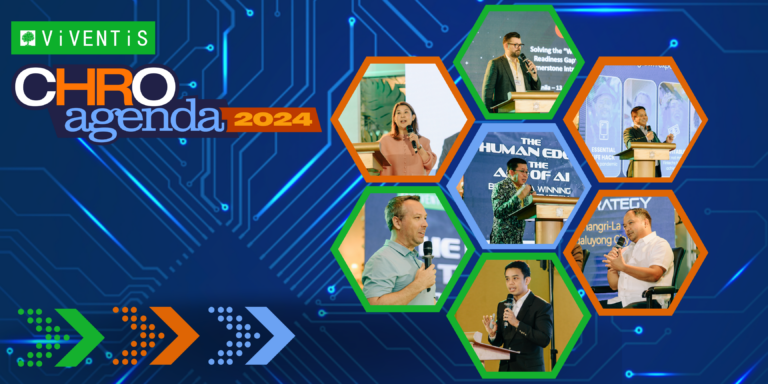Businesses and even personal endeavors were unexpectedly halted due to the worldwide pandemic, but as everyone learned to adjust and work despite our biggest handicap yet, we gradually were able to carry on with our lives. In terms of business, many, if not all, organizations have changed to a digital workplace, and many employees have favored the change for very justifiable reasons.
For starters, they were able to save money. The money they used to set aside for public transit or petrol was now utilized for other things, such as savings or even funding small businesses or personal interests. Second, they were able to spend more time with their families and relax a little more because they no longer had to wake up at an ungodly hour to commute to work.
Because of the pandemic, everyone was forced to face and accept the inevitable change. Even organizations that were previously opposed to technological developments.
Companies are at a crossroads as countries continue to loosen their lockdown measures. While COVID-19 effectively disrupted everyone’s plans, it also served as a cathartic moment for many people, as the sudden disruption caused people to reflect and consider many things, such as their personal lives, and for business owners, they began to think and consider the future of work; whether they will return to the traditional office or embrace change and continue the contemporary remote work, which is primarily facilitated by technology.
The learning and development (L&D) industry, in particular, has felt the digital shift, with an increasing number of companies embracing virtual delivery. If projections of a more remote workforce come true, the interdependence of business and technology will increase.
Furthermore, technological integration may not have the detrimental impact that many believe it does—in fact, it may have the opposite effect. Modern challenges require modern solutions, and as the world continues to thrive and advance, it is in our best interests to take the initiative and stay up to date on the newest technological advancements that can be extremely beneficial to our organizations.
We aren’t the first workforce to face technological transformation, and we can learn from writer William Arthur Ward: “The pessimist complains about the wind; the optimist expects it to change; the realist adjusts the sails.”

Building Trust
The utilization of modern devices and technology will enable long-term and far-reaching success. Aside from the benefits of its simple to complex features, organizations can potentially save a lot of time and enhance office productivity. If remote work becomes the norm, L&D professionals will be able to interact and give training more easily and broadly than ever before if they invest in digital learning methods. However, implementing new technologies in the workplace entails a renewed focus on established communication methods and values. Consulting employees on the implications of modern technology in the workplace can make a significant difference.
According to a recent Chartered Institute of Personnel and Development (CIPD) poll, just 20% of employees who had not been consulted about technological change were optimistic about how it would affect their employment, whereas 70% of those who had been consulted were optimistic. These statistics highlight the importance of employees’ sentiments about new technology and the importance of creating trust and including them before implementing automation.
The Need for Continuous Learning
Organizations must stay up with ever-changing technology innovations while also addressing the concurrent requirement for employee learning to fill the skill gaps that will eventually arise. Using innovative technology to assist employee learning promotes accessibility and involvement or participation. However, there are significant disparities in what researchers have to say regarding technological skill gaps.
According to a survey conducted by Enhancv, “there is no single skills gap for tech workers,” while the CIPD and PA Consulting report “People and Machines: from Hype to Reality” discovered that in the United Kingdom, “61% of employers that have implemented AI [artificial intelligence] and automation said employees require more skills and knowledge as a result.”
These different findings may imply that organizations must strike a balance between reskilling and upskilling in order to guarantee that training and development are always accessible for employees whose job functions are severely impacted by advancing technology.
An Optimistic View of the Future
One widespread concern is that technological dependency and development may result in job losses. While certain industries may see employment losses due to automation, the CIPD “People and Machines” research implies the opposite: among businesses that made investments in new technologies over the preceding five years, AI and automation actually added a few more jobs than they took away. Employers are also looking towards implementing more automation into their workplaces to ensure that adding such technology enhances rather than eliminates their workers’ roles.
While technology provides convenience, contrary to popular belief, it takes a whole village to run and maintain technological devices at work because there are several functions and/or procedures to get them up and running efficiently and accurately.
There have been numerous conversations regarding the future implications of technology on workplaces and society as a whole, but we must not overlook the importance of human interaction. According to the Pew Research Center’s report “The Future of Jobs and Job Training,” experts told researchers that there are human talents that “machines and automation may not be able to duplicate” and that “these should be the skills developed and nurtured by education and training programs to prepare people to work successfully alongside AI.”
Technological innovation has changed and will be expected to continue to impact our working environment, but computers cannot duplicate emotional intelligence and human connection.

.png)
